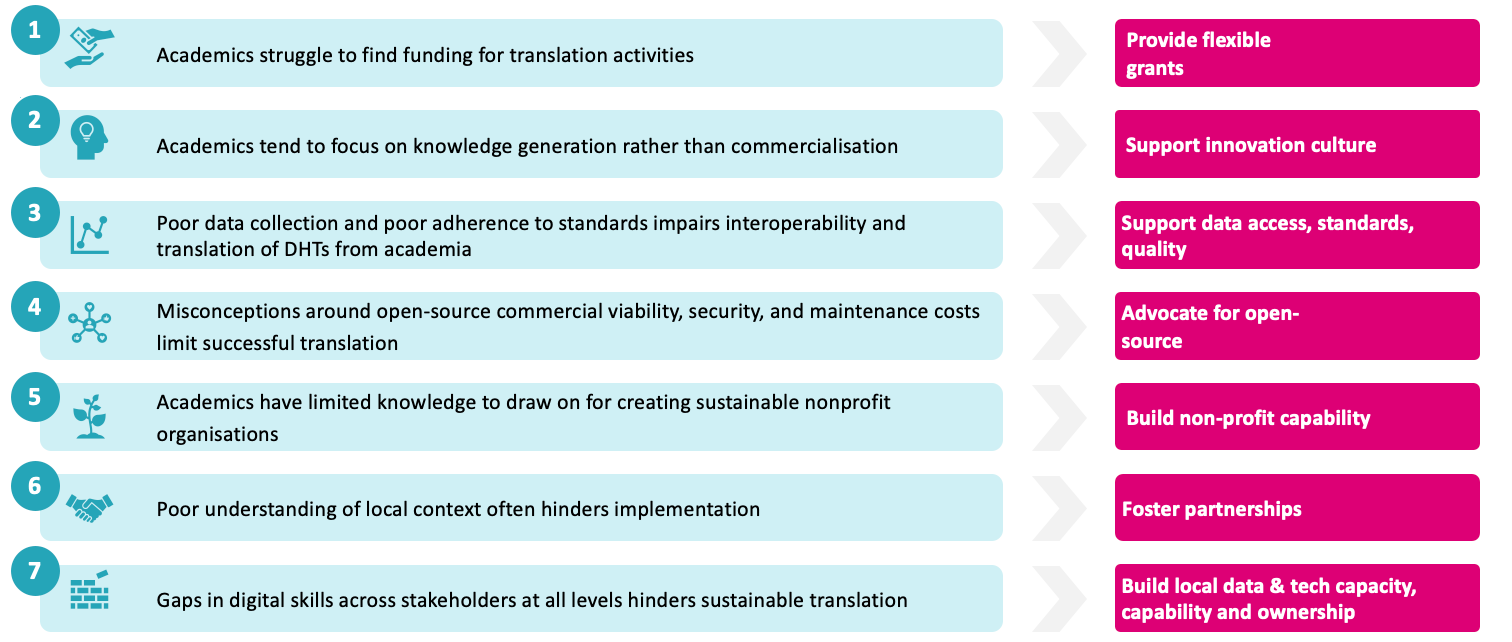In the first part of our three-part series, we explore the findings and recommendations from our Wellcome Trust-commissioned report on the sustainable translation of digital health technologies from academia.
Part 1: From research to health impacts: sustainably translating digital health technologies
Now more than ever academics across the globe are developing pioneering digital health technologies (DHT) with exciting opportunities to revolutionise healthcare and make positive health impacts at patient and system levels. However, in both high-income (HICs) and low / middle -income countries (LMICs), these technologies often fail to translate from promising proof of concepts into successfully implemented and sustainable innovations.
CF, in collaboration with the The Christabel Pankhurst Institute, were commissioned by Wellcome Trust, to research the barriers and opportunities to sustainable translation of DHTs developed in academic settings, and how these barriers may differ depending on geographic setting (i.e. high-income vs. low- and middle- countries), commercial route (i.e. for-profit vs. non-profit), and technology type (e.g. direct to consumer app vs. medical device).
Barriers to translation
Through literature review, extensive individual engagement of global digital health stakeholders, a global survey and delivery of 4 focus groups, we identified 7 high-level barriers with corresponding recommendations that funders can implement to increase the likelihood of successful translation.
One of our key findings was how these barriers have a differential impact in HICs compared to LMICs. A recent report from the department for Science, Innovation and Technology and HM Treasury [1] the UK government highlights “an ambition for the UK to be a science and technology superpower, with thriving partnerships between universities and high-tech spin-out companies contributing to economic growth and productivity”. In general, these ambitions differ considerably from LMICs, where we consistently heard of a desire to focus on capacity building, and therefore, translation of DHTs that meet local needs often centred around improving infrastructure and resilience of the overall health system. Further, given that there is a smaller market for DHTs to be commercialised via for-profit routes in LMICs, it means that DHTs commercialised via nonprofit routes are more likely to be sustainably translated.
These findings, amongst others, mean donors must develop unique approaches to funding and support based on the needs of the local context. Cross-sectoral collaboration that includes governments, universities, healthcare providers, nonprofits, and international bodies will be crucial to seize upon the potential opportunities that digital health research can have on population health across the globe.
Recommendations for successful translation
In our report we have synthesised our findings into a set of actionable recommendations that funders can implement to improve the rate of successful translation. We delve into the pathways, barriers, and dynamics that shape the translation of promising innovations into practical technologies capable of enhancing healthcare delivery, improving public health, and contributing to a resilient and sustainable global healthcare infrastructure.
In parts two and three of this series we will be exploring digital health uptake within the NHS, and sharing insights on our approach to carrying out the research for this report.
Please contact us today to find out more about this research and our work across digital health.
[1] Independent Review of University Spin-out Companies, Final report and recommendations, Science, Innovation and Technology and HM Treasury (November 2023)



